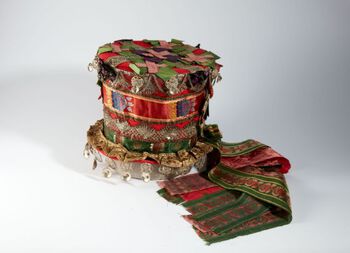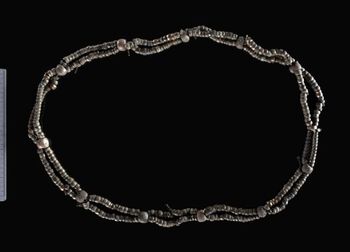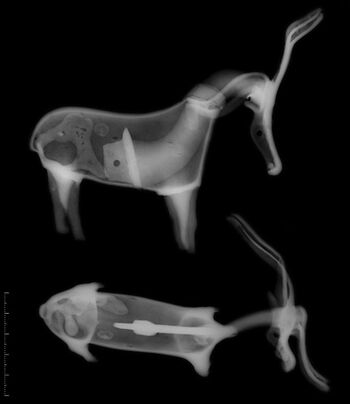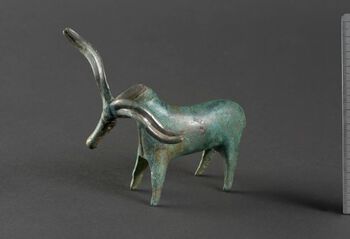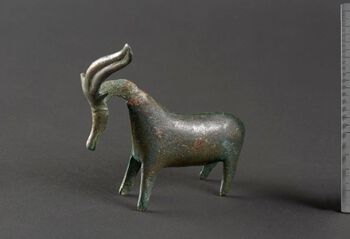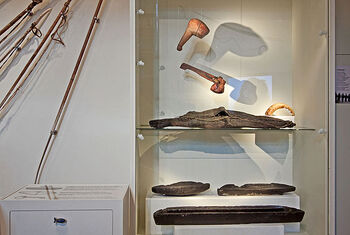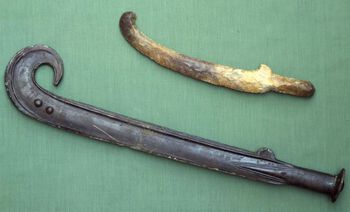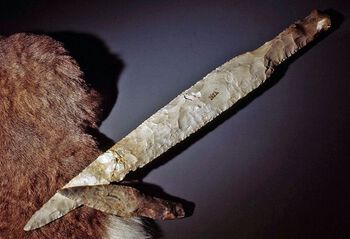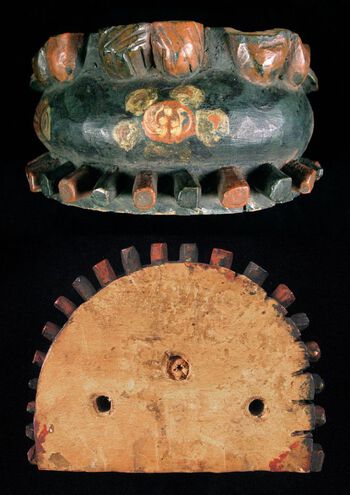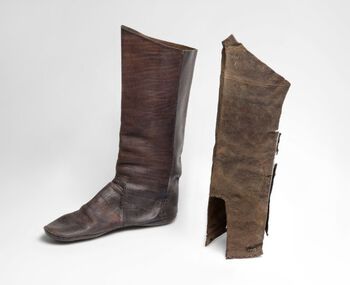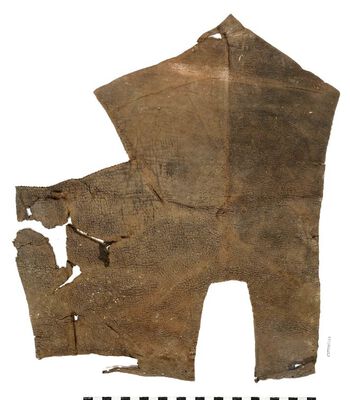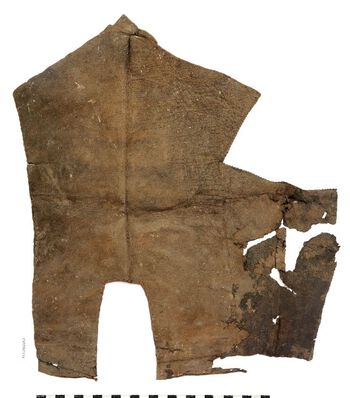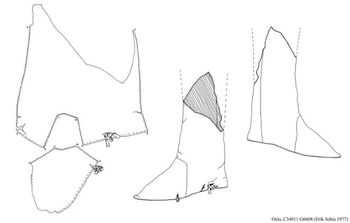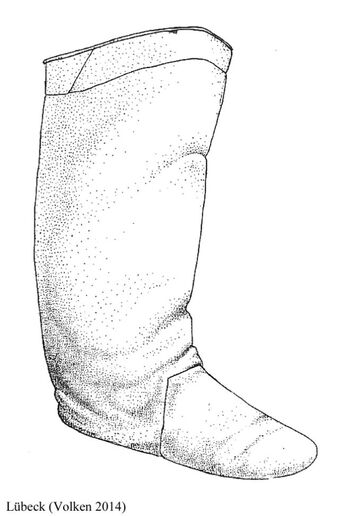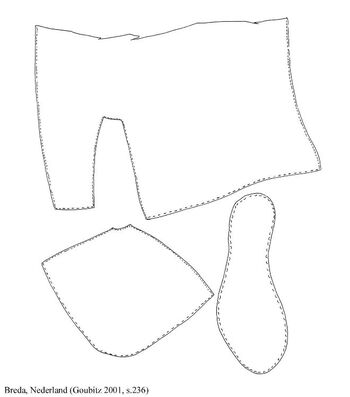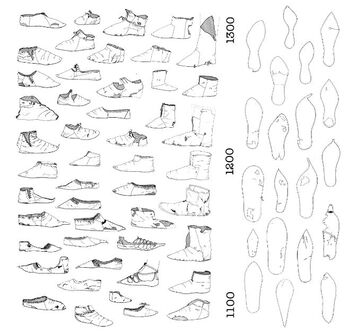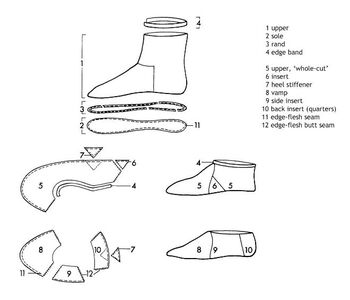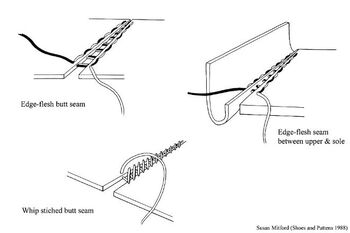Images - Page 3
-
Feb. 1, 2017
Norwegian Museum of Cultural History (NF.1991-0337A). Photo was downloaded from DigitaltMuseum.no.
-
Jan. 30, 2017
The unique bead necklace from the Vestby hoard, with 353 tin-plated bronze beads. Photo: Kirsten Jensen Helgeland, Museum of Cultural History.
-
Jan. 30, 2017
X-ray photograph of one of the animal figurines, showing how the head is cast onto the body. The socket at the neck end is also visible. Photo: Museum of Cultural History.
-
Jan. 27, 2017
One of the two hybrid figurines from the Vestby hoard: Horned horse. Photo: Kirsten Jensen Helgeland, Museum of Cultural History.
-
Jan. 27, 2017
One of the two hybrid figurines from the Vestby hoard: Horned horse. Photo: Kirsten Jensen Helgeland, Museum of Cultural History.
-
Dec. 16, 2016
The Grude dagger. Photo: Terje Tveit, Museum of Archaeology, University of Stavanger.
-
Dec. 16, 2016
The Rørby sword and flint sabre from Fårskov. Photo: Lennart Larsen, National Museum (©Creative Commons, for conditions of use see here: http://creativecommons.org/licenses/by-sa/2.5/dk/)
-
Dec. 16, 2016
The Grude dagger compared with a more ordinary flint dagger from the Bronze Age. Photo: Terje Tveit, Museum of Archaeology, University of Stavanger.
-
Dec. 16, 2016
Front of the crown/bridal lad with strong red, green, gold and white pigments. The lad consists of three different parts: at the bottom, green and red protruding pegs; a series of carved open leaves at the top; and in the middle a thick torse with a red five petal rose with gold tints and a green stem in a kind of rosemaling style. Rosemaling with simple four and five petal rosettes and green stems is usually dated to the late 1700s, early 1800s (Vesaas). The underpart of the crown/bridal lad with three holes corresponding to the upper part of the original crown. Three wooden plugs (dowels) have kept it in Place.
-
Nov. 24, 2017
To the right, a knee high boot from the medieval city of Tønsberg (C57759/1113). To the left, a reconstruction of a similar Type 1 boot as referenced in Erik Schias typology. Photo: Vegard Vike, KHM/UiO.
-
Nov. 24, 2017
Boot shaft excavated at the ‘Fjernvarme 2010’ project in Tønsberg (C57759/1113). Photo: Pia Edqvist, KHM/UiO.
-
Nov. 24, 2017
Boot shaft excavated at the ‘Fjernvarme 2010’ project in Tønsberg (C57759/1113), seen from the inside. Photo: Pia Edqvist, KHM/UiO.
-
Nov. 24, 2017
Illustration of a type 1 boot shaft from an earlier excavation in Tønsberg (C33968/TG2120) Photo: Anne Britt Halvorsen, KHM/UiO.
-
Nov. 24, 2017
Example of Type 1 boot from Gamlebyen in Oslo (C34011/G6608). Illustration after Schia (1977:108).
-
Nov. 24, 2017
A boot from Lűbeck, Germany. Illustration after Volken (2014:142).
-
Nov. 24, 2017
Boot from Breda, the Netherlands, with sole, vamp and a secondary cut shaft. Goubitz, O,.et al (2001:236).
-
Nov. 24, 2017
Shoes and soles from the end of 11th century to early 14th century. Illustration after Erik Schia (1987:402-403).
-
Nov. 24, 2017
Shoes during the Middle Ages and their different parts. Illustration after Järpe, A: Ambrosiani, B: Gestsson, G. (1982:356)
-
Nov. 24, 2017
Seams used for medieval shoes. Illustration from ’Shoes and Pattens’ (1988) by Susan Mitford.

